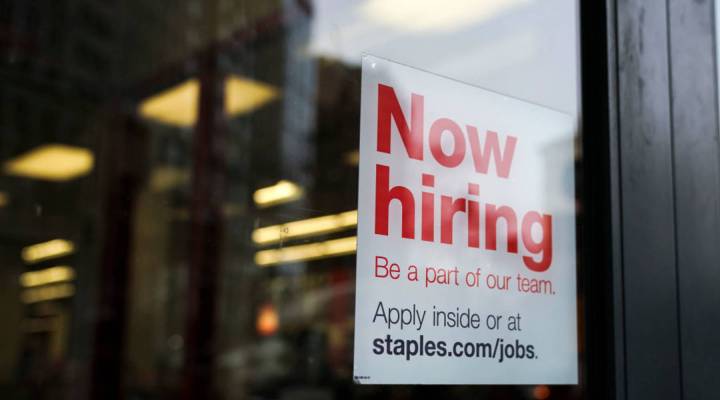
U.S. adds a solid 164,000 jobs; unemployment rate stays 3.7%
Share Now on:
U.S. adds a solid 164,000 jobs; unemployment rate stays 3.7%

U.S. employers slowed their hiring in July but still added a solid 164,000 jobs to an economy that appears poised to extend its decade-long expansion.
The unemployment rate remained at 3.7% for a second straight month, the government said Friday. Average hourly earnings rose 3.2% from a year ago, up from a 3% year-over-year gain in June.
Though the pace of hiring has slowed this year, one reason is that a growing share of Americans already have jobs. Unemployment is near a half-century low. The overall U.S. economy remains on firm footing, and last month the expansion became the longest on record.
Still, the economy has faced some tumult as President Donald Trump has escalated his trade conflict with China. On Thursday, Trump announced plans to tax an additional $300 billion of Chinese imports beginning in September, a move that could slow economic growth, at least slightly.
Yet the Federal Reserve has acted to sustain the expansion in part because some of the benefits are only now reaching America’s lower-income communities. The Fed on Wednesday cut its benchmark interest rate for the first time in a decade to try to counter the impact of Trump’s trade wars, stubbornly low inflation and global weakness.
The trade issues have been weighing on global financial markets, in part because tariffs can contribute to slower growth. The Dow Jones Industrial Average was down 177 points in mid-morning trading.
In Friday’s employment report for July, the government revised down its estimate of job growth for May and June by a combined 41,000. Over the past six months, the economy has added jobs at a monthly average of roughly 141,000. That is down from a monthly average of 236,000 during the same period last year.
In July, several industry sectors posted solid gains. Health care added a robust 30,400 jobs. Restaurants and bars added 15,400 jobs. Local governments contributed 14,000 jobs, primarily in education. The finance and insurance industry added 13,900.
The manufacturing sector, though, has been struggling with declines in output. Manufacturers posted healthy gains of 16,000 jobs in July, though most of the growth was in the transportation sector that could soon be hit by auto plant layoffs.
But other areas showed some signs of weakness. Construction companies added just 4,000 workers. The transportation and warehousing sector added just 300 jobs. Retailers shed 3,600.
Though it is growing consistently, the economy does appear to be sliding into a slower phase. The gross domestic product — the total output of goods and services produced in the United States — grew at a decent if unspectacular 2.1% annual rate in the April-June quarter, down from a 3.1% pace in the January-March period.
Consumer spending increased at a 4.3% annual rate and helped propel much of the growth. But business capital investment declined for the first time in three years, a likely sign that Trump’s aggressive use of tariffs against China and other countries has slowed corporations’ expansion plans.
Home sales have fallen as high prices have kept many people out despite the benefits of low mortgage rates and job gains. Sales of existing homes have tumbled 2.2% over the past 12 months, according to the National Association of Realtors.
Factories have also been coping with a slowdown. In part, that’s because the global economy has weakened and the president’s tariffs on hundreds of billions of dollars’ worth of goods — and threats to add more — have disrupted supply chains. The Fed said this month that manufacturing output has improved just 0.4% from a year ago after having declined over the past six months.
There are signs, though, that consumers are optimistic. The Conference Board’s index of consumer confidence last month reached its best reading since November. A higher percentage of Americans anticipate pay raises in the next six months.
Indeed, spending at restaurants and bars has increased 4.2% year-to-date, according to government reports. And while traditional store retailers have faced hardships, online stores have prospered: Non-store retailers have enjoyed a 10.6% jump in sales.
There’s a lot happening in the world. Through it all, Marketplace is here for you.
You rely on Marketplace to break down the world’s events and tell you how it affects you in a fact-based, approachable way. We rely on your financial support to keep making that possible.
Your donation today powers the independent journalism that you rely on. For just $5/month, you can help sustain Marketplace so we can keep reporting on the things that matter to you.












